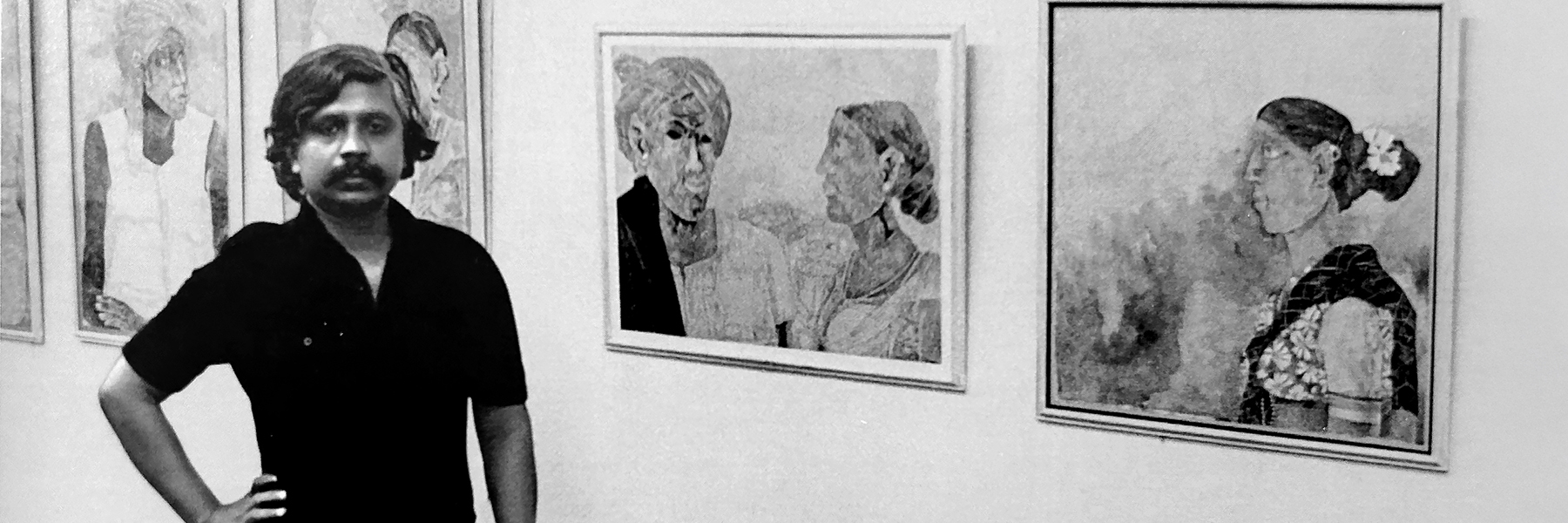
BEHIND THE CANVAS: 11 UNKNOWN FACTS ABOUT ARTIST LAXMA GOUD
Contemporary master Laxma Goud is one of India’s leading artists today, noted for his bold, erotic vision of rural life as well as his remarkable skill across diverse mediums. While his art may be widely known, there are many untold stories behind the artist himself and his rise from a small Telangana village to international acclaim.
In this blog, we share some lesser-known facts about Mr. Goud’s life, education and career that shed new light on this living legend.
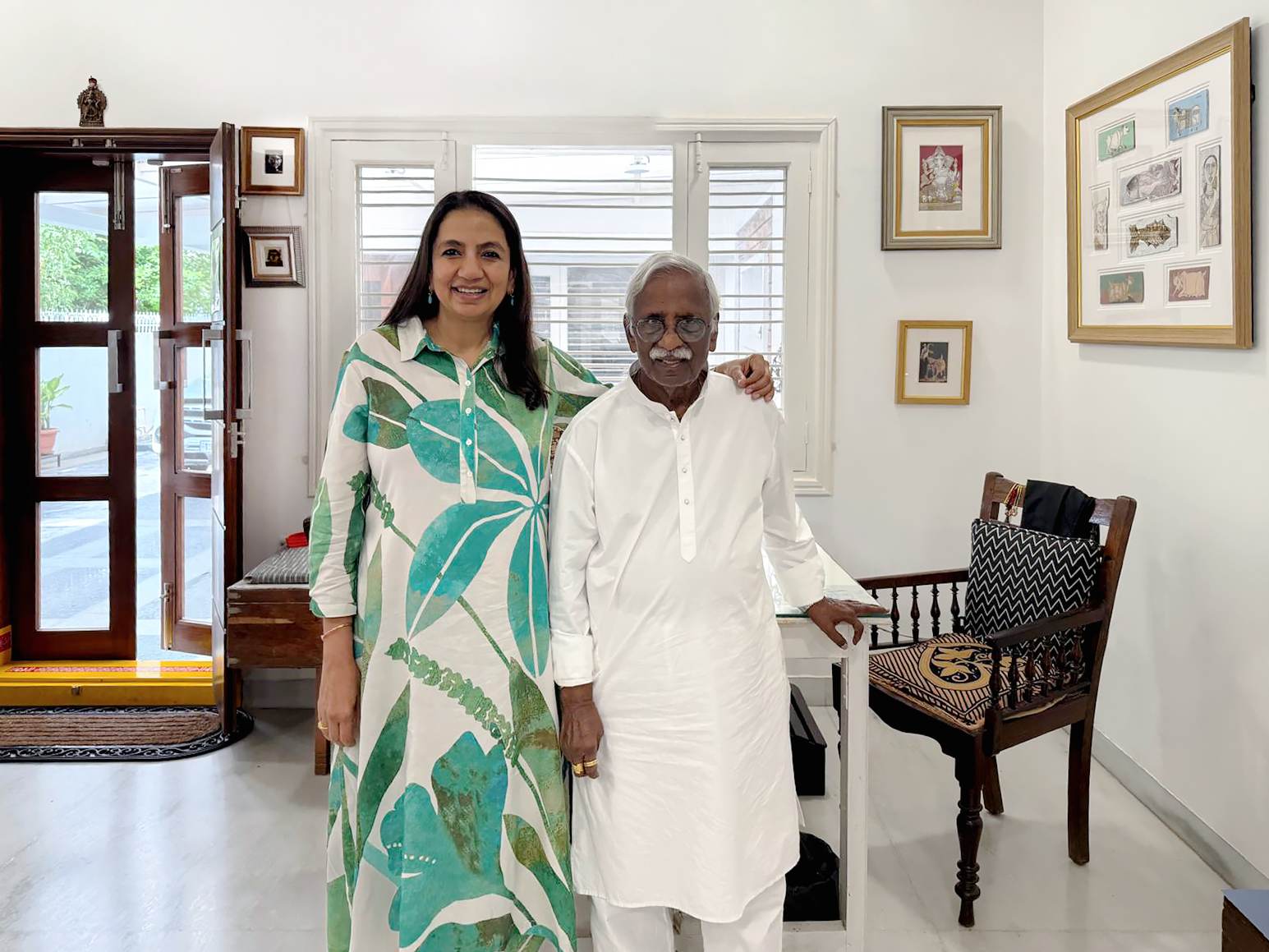
Where was artist Laxma Goud born and raised?
He was born in 1940 in Nizampur village in Telangana (then Andhra Pradesh). His father maintained village revenue records and worked as an accountant for a local landlord, and he grew up alongside four brothers and two sisters. Their hometown was so small and remote that Mr. Goud had to stay in a neighboring village to attend high school!
What role did his father play in his journey as an artist?
His father, Kalal Venka Goud, identified his talent at a young age and encouraged his interest in art. Even though there were no professional artists in their village to provide an example or share advice, his father took Mr. Goud to Hyderabad after high school and enrolled him in the Fine Arts College.
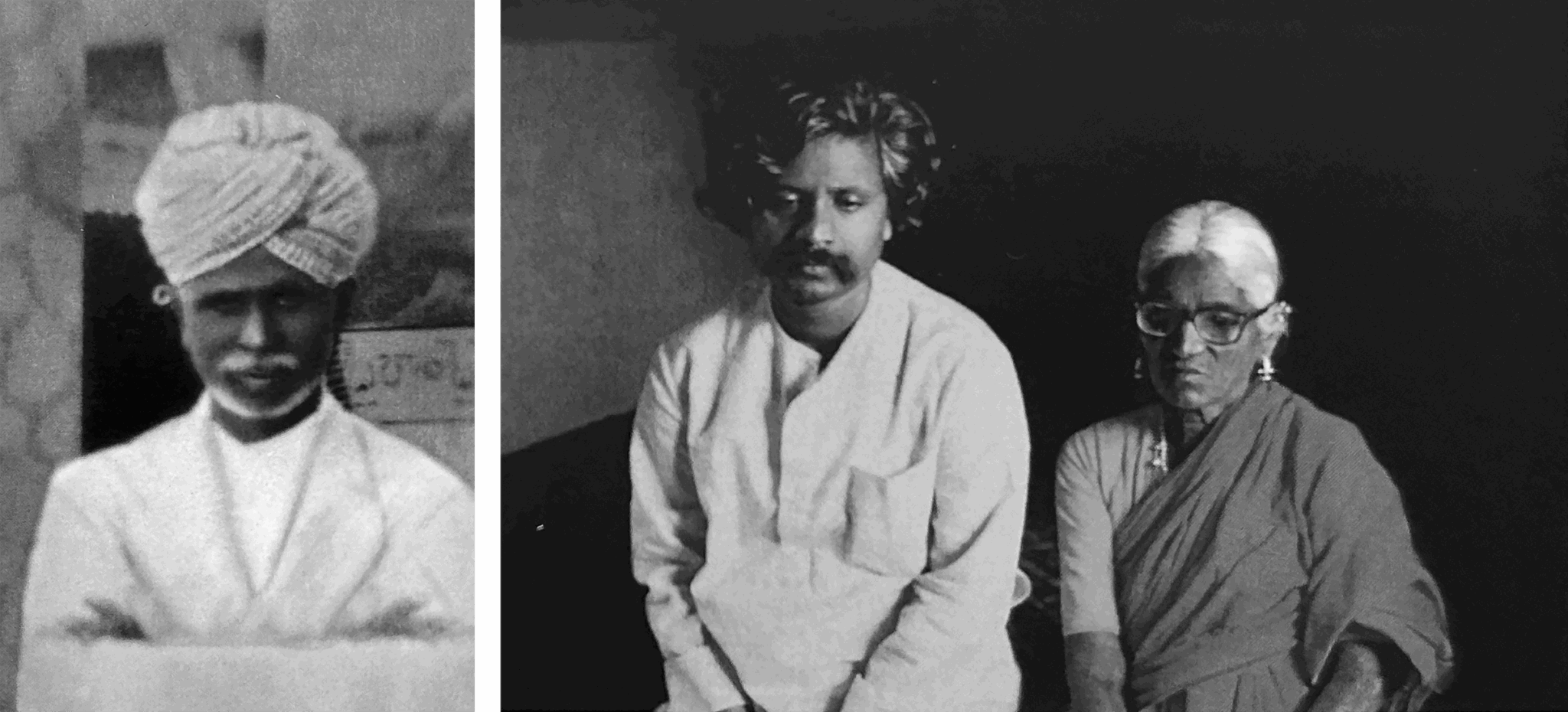
Where did Mr. Goud study painting and printmaking?
He first completed a diploma in painting and drawing from the Government College of Fine Arts and Architecture in Hyderabad, graduating in 1962. Then, from 1963 to 1965, he attended M.S. University in Baroda, where he studied mural painting under Professor K.G. Subramanyan and discovered his aptitude for printmaking.
How did studying under K.G. Subramanyan influence Laxma Goud’s career?
Affectionately called ‘Mani da’ by Mr. Goud, K.G. Subramanyan provided studio space, wrote notes in his sketchbooks and pushed him to experiment with various mediums. For instance, Subramanyan hired his mentee to assist with a bas-relief mural for the art department, teaching him about sculpting and mural design. Mr. Goud also credits his mentor with helping him to follow his vision. “It was my teacher, Mani da, who had given me the confidence that drawing too could be art. I painted too, but he liked my drawings better,” he says.

After college, how did Laxma Goud refine his voice as an artist?
He returned to Telangana and revisited his village roots. He sketched the people, animals and landscape, finding inspiration in the beauty of local women, farmers and herdsmen, and regional customs like ‘Dasarollu,’ or women who traveled between villages carrying news of births and deaths. Importantly, he was struck by the overall sense of authenticity and freedom in his hometown, where men and women were not shy or ashamed of their sexuality.
How did Mr. Goud support himself and his family before he became a famous artist?
For decades, he balanced his art with full time jobs, reserving his evenings for drawing and painting. He made batik paintings after college, and from 1973 to 1989, he worked as a graphic supervisor for the public television station Doordarshan. In 1989, he joined the Sarojini Naidu School of Fine Arts at the University of Hyderabad, and he retired in 2000 as its dean. Even though he consistently sold prints and exhibited his art in galleries, he maintained a traditional career for stability.
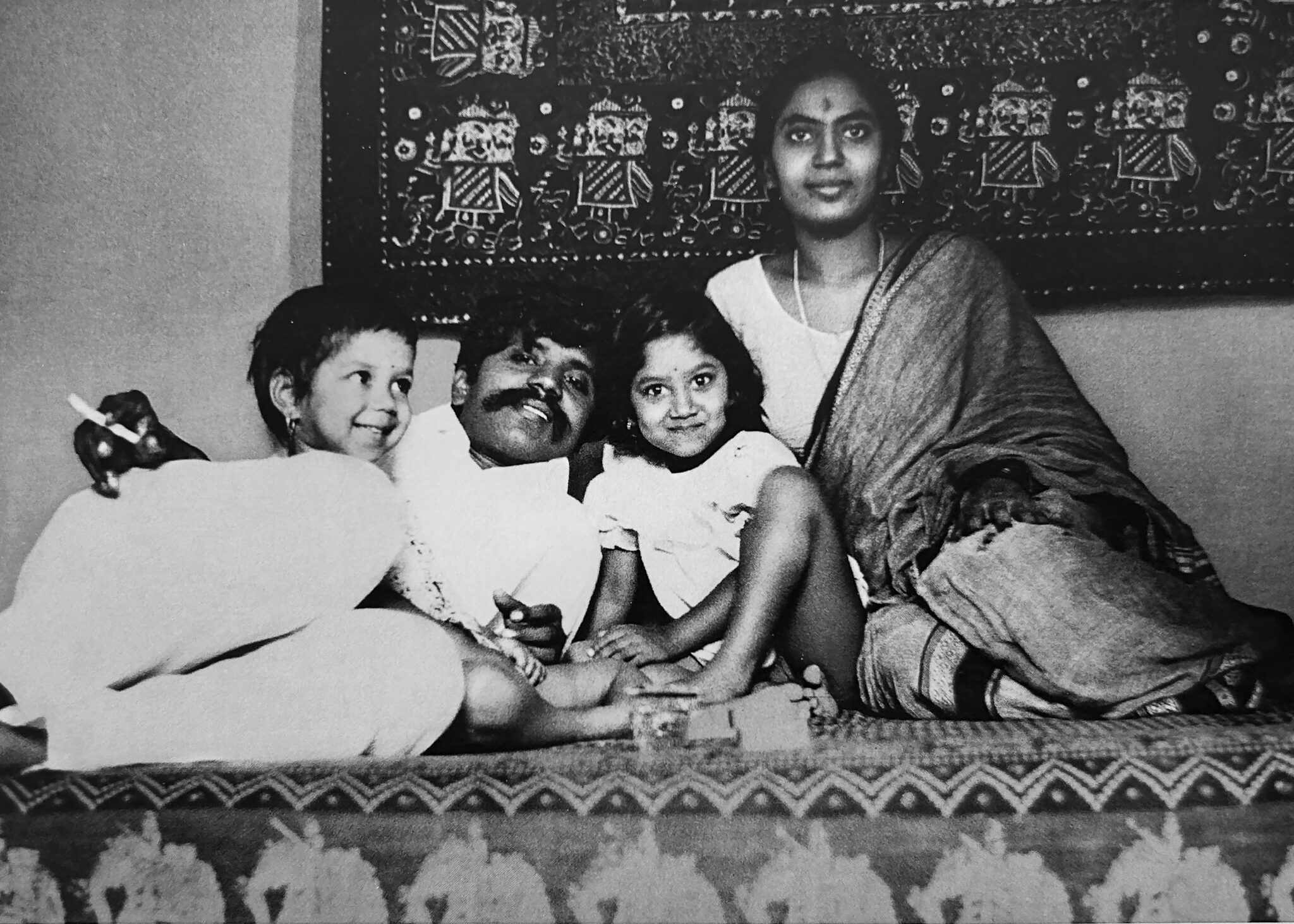
What was Mr. Goud like in his personal life?
In 1966, he married Ramulamma, and they had three daughters Nandini, Iravathy and Vasanthy. His wife was the backbone of the family and always supported his artistic pursuits. Although he traveled often, his daughters fondly recall that he would cook elaborate meals upon his return home, and he would gift them clothes and treat them to the cinema.
What are key themes in art by Laxma Goud?
His art centers on the people of Telangana, their daily lives and their relationships with each other as family, friends and lovers. These figures are steeped in nostalgia, with women rendered in traditional clothing and accessories, adorning them with earrings, nose-pins, embroidered blouses and printed saris. He also draws on motifs from folklore and frequently depicts deities like Krishna, Ganesha and Lakshmi.
How does he describe his studio routine?
Even now, Mr. Goud pursues his art with near obsession. He works in his studio every day, and he is constantly drawing, whether preparing a large canvas or sketching on postcard-sized paper. About the Hindi film songs playing in the background, he says, “I like these popular songs and make no pretense of wanting to hear classical music.”
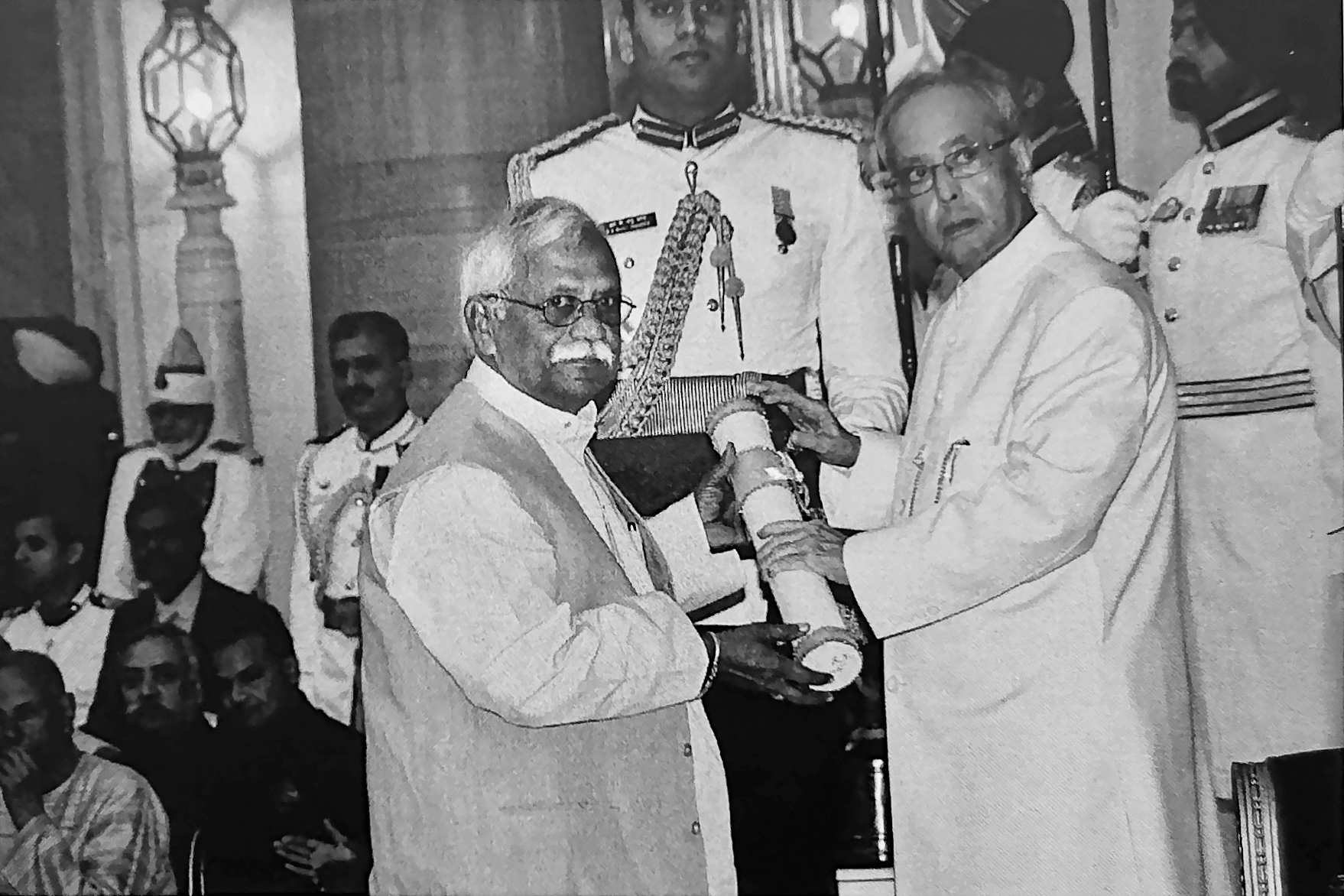
What awards and honors has Laxma Goud received throughout his career?
Most notably, he received the Padma Shri Award in 2016, the fourth-highest civilian honor. He has received other honors including a Telangana State Award and the Prafulla Dahanukar Lifetime Achievement Award.
Which museums feature his works in their collections?
Art by Laxma Goud can be found in the prominent collections of Glenbarra Art Museum in Japan, Hamburger Kunsthalle in Germany, National Gallery of Modern Art in New Delhi, Peabody Essex Museum in Massachusetts, Salar Jung Museum in Hyderabad, and Victoria and Albert Museum in London, among others.
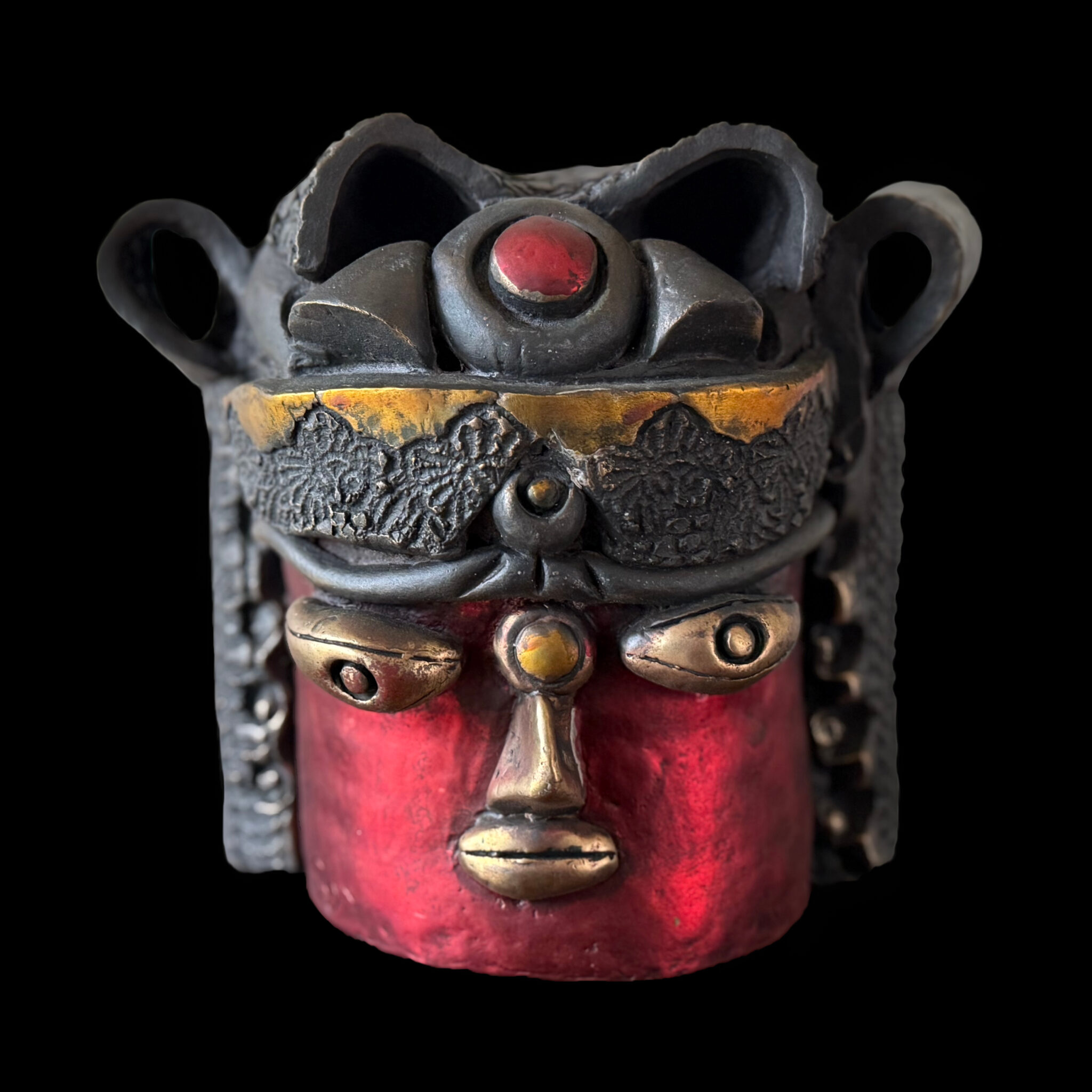
Mr. Laxma Goud is such an inspiration, and I hope you enjoyed learning more about his life and approach to art. To read more about the artist, please visit https://laasyaart.com/laxma-goud. To inquire about original paintings by Laxma Goud, please reach out at info@laasyaart.com or +1 650-770-9088.
Many thanks to Ratna Rao Shekar and her book K. Laxma Goud: In Black & White, published in 2021. This book dives deep into Mr. Laxma Goud’s life and career, featuring essays by K.G. Subramanyan and Jagdish Mittal with their personal memories of the artist.
— Sonia Patwardhan

Leave a Reply
You must be logged in to post a comment.